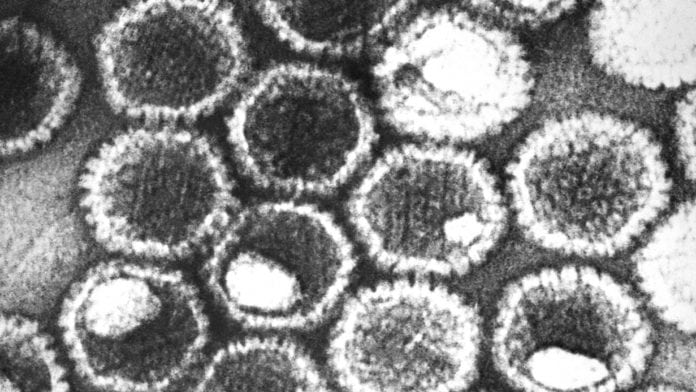
Researchers at the Medical Research Council (MRC), UK, have successfully used the Nobel Prize-winning technology cryo-electron microscopy to reveal a detailed structure of the common herpes virus.
The new cutting-edge technique reveals in high resolution the biological mechanisms the herpes virus uses to infect people. Researchers hope this will lead to the development of new drugs.
According to a report on the MRC website, using the cryo-electron microscopy, researchers at the MRC-University of Glasgow Centre for Virus Research (CVR) revealed the structure of a motor-like assembly called a portal. Herpes viruses pump their DNA into preassembled capsids through the portal. Once the virus infects cells, the DNA is ejected from the capsid by the same portal machinery.
Lead author of the study Dr David Bhella, of the MRC-University of Glasgow Centre for Virus Research, said: “Cryo-electron microscopy, combined with new computational image processing methods, allowed us to reveal the detailed structure of the unique machinery by which the virus packs DNA into the capsid. The DNA is packed very tightly, reaching a pressure similar to that inside a bottle of champagne.”
What is cryo-electron microscopy?
In 2017, Dr Richard Henderson at the MRC Laboratory of Molecular Biology was awarded the Nobel Prize in Chemistry alongside Professor Jacques Dubochet and Dr Joachim Frank for developing cryo-electron microscopy for the high-resolution structure determination of biomolecules in solution.
Dr Jonathan Pearce, head of infections and immunity at the MRC, added: “Dr Bhella and his team have now used this technique to elucidate the structure of the herpes virus, revealing a ‘molecular machine’ that is involved in virus replication. The findings provide scientists with a better understanding of the virus and its anatomy, and, in turn, an insight into potential new therapeutic targets.
“These elegant experiments exemplify the potential of the Scottish Centre for Macromolecular Imaging due to be launched later this year at the CVR, which will support vital research into diseases posing the greatest threat to human health.”
About the herpes virus
Viruses within the herpes family can cause cold sores and chicken pox. Members of this family of viruses can also cause cancers and severe illnesses in unborn children.
The research was published in PLOS Biology.
























